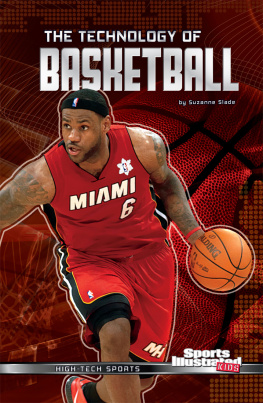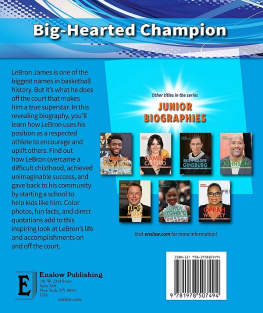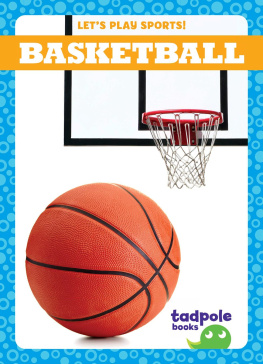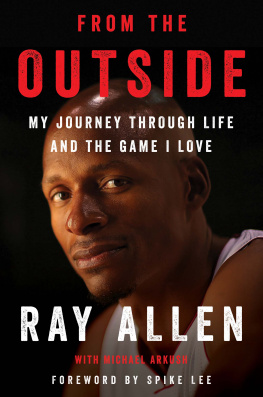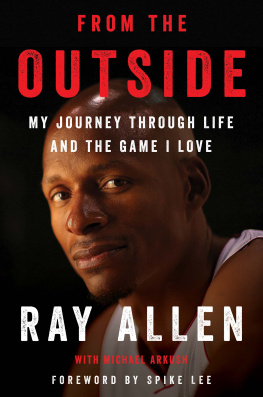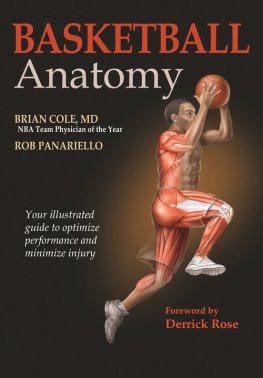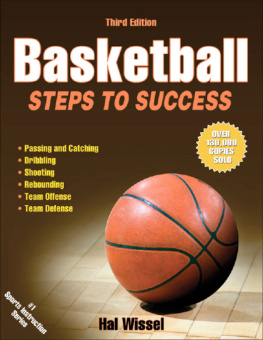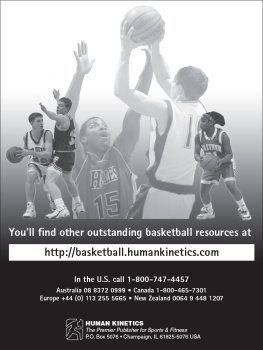COURT SENSE
COURT SENSE
The Invisible Edge in Basketball and Life
by George A. Selleck, Ph.D.
Foreword by Richard Lapchick, Ph.D.

COURT SENSE
The Invisible Edge in Basketball and Life
Copyright 1999 by George Selleck, Ph.D.
All rights reserved. No part of this book
may be used or reproduced in any manner
whatsoever without the written
permission of the publisher.
published by
DIAMOND COMMUNICATIONS
An Imprint of the
Rowman & Littlefield Publishing Group
4501 Forbes Blvd - Suite 200
Lanham, Maryland 20706
Distributed by National Book Network
Library of Congress Cataloging-in-Publication Data
Selleck, George A. (George Abraham), 1934
Court sense : the invisible edge in basketball and life / by George A. Selleck ; foreword by Richard Lapchick.
p. cm.
ISBN 1-888698-16-0
1. Basketball--Psychological aspects. 2. Sports--Psychological aspects. 3. Athletes--Life skills guides. 4. Success. I. Title.
GV889.2.S45 1999
798.32301--dc21
98-30983
CIP
CONTENTS
PART ONE
WHAT IS COURT SENSE? |
PART TWO
HOW DO YOU GET COURT SENSE? |
PART THREE
HOW DO YOU COACH COURT SENSE? |
PART FOUR
FROM COURT SENSE TO LIFE SENSE |
FOREWORD
In the 1998 Western Conference Finals, the Los Angeles Lakers were favored to beat the Utah Jazz, even though the Jazz owned the best record in the NBA. After all, the Lakers were young, talented, and had four All-Stars on their squad. The Jazz were old, boring, and dressed funny. Nevertheless, in four methodical games, the Jazz literally swept the Lakers under the carpet. Jazz coach Jerry Sloan had said when the series started that the team that played with the most intelligence had the best chance of winning.
Never underestimate the power of an athlete who knows how to think.
Today, being a successful athlete is not just about technical proficiencythe jump shot, the curveball, the perfect dig. Todays athletes need to be able to think critically and play wellat the same time. They need to have Court Sense.
Court sense isnt a primer for showing athletes how to stand at the free throw line or what plays to run when the score is tied and there are five seconds left on the clock. Instead, it tells athletes how to play smart. Athletes with court sense know how to read teammates, assess opponents weaknesses, and know how and when to utilize their own strengthswhen to steal second, when to take the shot or dish-off to a teammate, when to spike the ball.
These thinking skills dont just apply to sports, however. The skills that athletes need to think on their feet during a game are the same skills they need to figure out a geometry problem, decide on a career, or work through a relationship. Thus, the secondand most importantthing court sense does is to show athletes how to transfer the thinking skills they learn on the athletic field to everyday situations in their lives. To do this, Dr. Selleck uses experiences from his own career as a Hall-of-Fame basketball player, coach, referee, psychologist and educatoralong with stories and examples taken straight from todays sports headlines.
It is Dr. Sellecks belief that every skill necessary for a productive and successful life can be learned from sports, and that participation can help young peopleregardless of the depth of their sports experiencedevelop concrete life skills that will prepare them to become successful adults and community leaders.
Court sense should be of vital interest to athletes, coaches, educators, and leaders in the sports community. No matter what sport is involved, the lessons contained in court sense are viable tools to help teach students of all ages critical thinking skills. As a sociologist and educator, what I like most is the universal applicability of its lessons and the fact that court sense is appropriate for athletes of any skill level.
Because 40 million youth participate in sports programs every year, sport becomes a universal language that everyone can relate to in some waywhether as a player, supporter, or viewer. As Dr. Selleck points out, sport is fun, interactive, and emotional. This makes it a powerful context for learning and the ideal vehicle to convey important messages to a captive audience. Whenever we can make sport and its athletes better, we move toward creating a better society. With the addition of court sense, we are succeeding in doing just that.
Richard Lapchick, Ph.D.
Center Director
The Center for the Study of Sport in Society
ABOUT THE AUTHOR
My first personal recollection of George Selleck occurred in the spring of 1953 when I was pitching batting practice for the Stanford freshman team. As a transfer student from Colgate University and, therefore, ineligible for a year, I was working out with the frosh. After throwing a number of pitches high, wide, and hardly handsome, Selleck yelled out to me, Come on, give me something to hit.
I thought, Oh, great, I was going to have to put up with a prima donna. I mean, after all, at 58 and 140 pounds, George was not exactly an easy target to pitch to. And his reputation as an exceptional athlete from glitzy Southern California preceded him. He had been all everything at Compton High School including the states high school basketball Player of the Year when he led his team to a 32-0 record. His initial exploit at Stanford was pacing the freshman Cagersalongside his to-be backcourt mate, Ron Wagnerto a gaudy 18-1 mark. So in consecutive years, Selleck basketball teams had been 50-1!
Well, my initial diamond take on George was certainly in error. He wasnt being arrogant or getting on my case, he was just exhibiting one of his enduring traitsthat of wanting to get as much out of practice time as possible. I came to realize that George was never satisfied with anything but the best, either from his team or himself. He was extremely critical of himself and worked harder than anyone on the squad, both in gameswhatever the gameand at practice.
I really got to know George after the Stanford baseball coaches decided I wrote a better game than I played. As a result, I spent my Stanford career partly as sports editor of the student newspaper, The Stanford Daily, and also covering Stanford sports for local newspapers in Palo Alto and San Jose.
I owe George a lot! He was great copyon and off the court. He led by example and was the epitome of this book, Court Sense. To do the things he did, he had to play smart. Phil Woolpert, who guided USF to basketball greatness with Bill Russell and K.C. Jones, referred to George as the Bob Cousy of the West. I had the good fortune of growing up in the East and saw Cousythe Holy Cross All-Americanperform several times at Madison Square Garden. Cousy was a magician on the court. Woolpert was certainly right on target in his comparison. And for latter-day readers, perhaps we could refer to John Stockton as the George Selleck of this era.
In my senior year, George led the unsung Stanford cagers to a 17-8 record and a second-place finish in the then-Pac-8 Southern Division. The following season, he was named an All-American. He spurned an opportunity to play professional basketball, preferring to expand his horizons, pursuing graduate work at Stanford, Princeton, and the University of Southern California, earning a doctorate in counseling.


